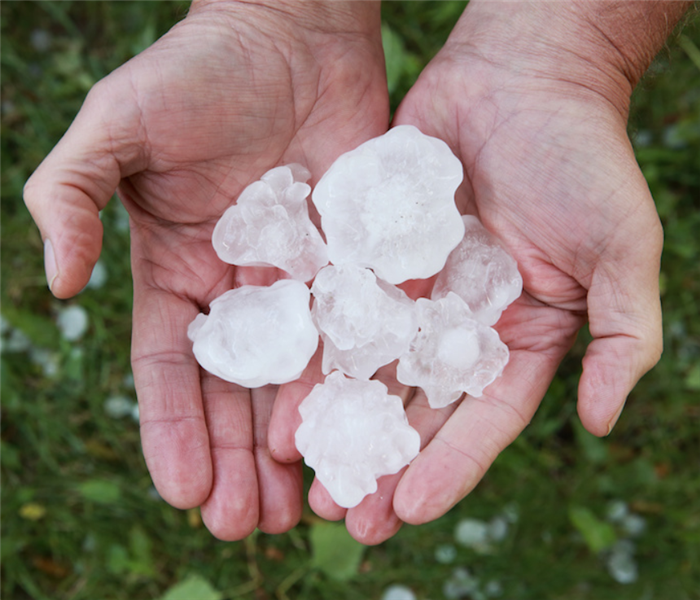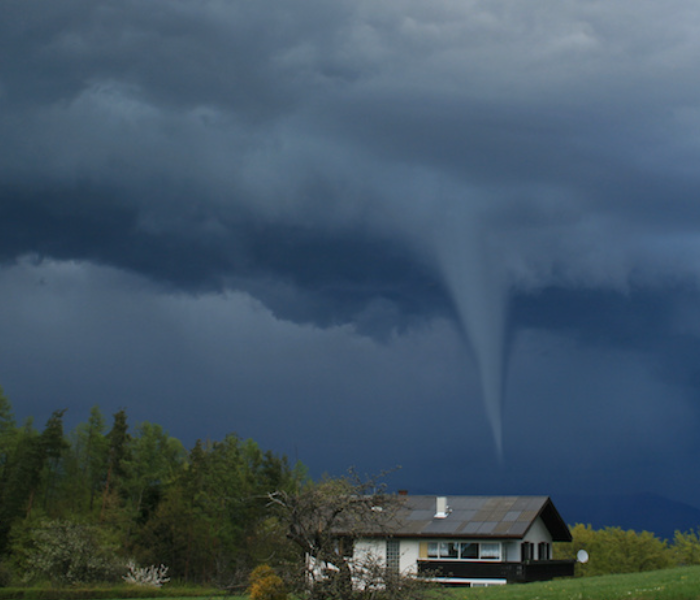Archived Storm Damage Blog Posts
Homeowners Insurance and Wind Damage
8/11/2022 (Permalink)
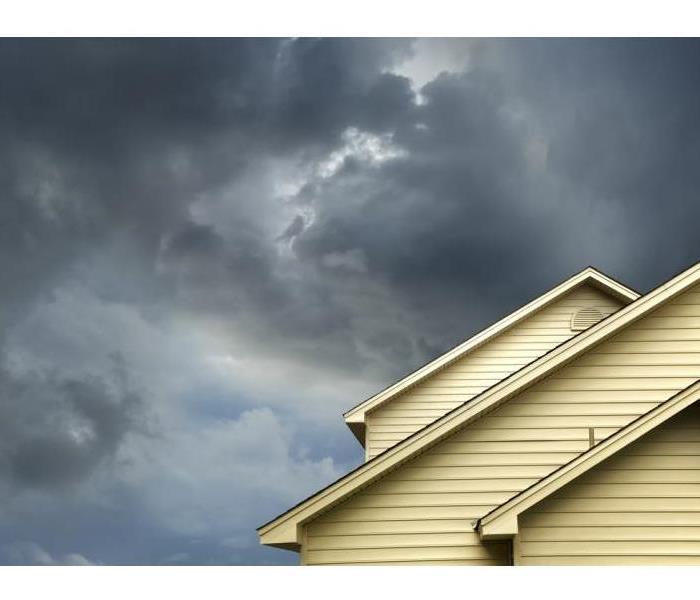 Storm Damage? Call SERVPRO Northwest Long Beach to help 562-506-4992
Storm Damage? Call SERVPRO Northwest Long Beach to help 562-506-4992
Most homeowners policies cover wind damage, one of the most common causes of damage from storms. According to the Insurance Information Institute, research shows that homeowners filed more claims between 2014 and 2018 due to wind and hail damage than any other type of loss,1 including fire, water damage or theft.
Typically, homeowners insurance offers some wind damage coverage for the costs of repair and replacement associated with a bad storm. Be sure to check your homeowners policy to understand what it covers.
What Is Considered Wind Damage Under a Homeowners Policy?
Generally, most damage caused by wind in any type of storm is considered wind damage and is covered under a homeowners policy. Damaging winds can cause destruction to roofs, windows and more.
There are several types of storms that can cause wind damage that typically fall under the coverage in a homeowners policy, including:
- Tornado
- Hurricane
- Thunderstorm
- Hailstorm
- Microburst
- Derecho
- Nor’easter
Is Wind Damage Covered by Home Insurance?
Yes, as noted above, homeowners insurance typically covers most types of wind damage. Usually, the dwelling coverage of your homeowners policy will help pay to repair or replace damage to the roof, siding or windows due to a wind event. Your homeowners policy also includes personal property coverage that may help to repair or replace items that become damaged due to a wind event.
Does Homeowners Insurance Cover Wind Damage to Roofs?
Depending on the type of policy you have, your homeowners insurance likely covers wind damage to the roof of your home. If you have other structures coverage, you may be covered for wind damage to roofs on other structures on your property, like a shed or free-standing garage.
Your policy will explain coverage for roof damage repair or replacement due to a wind event. Certain things like the age of your roof or unresolved maintenance issues may factor in to how much of the costs will be covered to repair the damage or replace the roof. Your insurance carrier will evaluate the damage, including any damage that may have existed prior to the wind event, and determine the appropriate reimbursement.
Protect Your Home
Wind-driven events have the potential to cause significant damage to your home. While your homeowners insurance helps protect your investment, it is equally important to take proactive measures to help secure your home from the damage of high winds. Here’s what you can do:
- Protect Your Roof. Regular roof inspection is an important safeguard. You can start by doing your own site inspection. Walk a short distance from your house and use a pair of binoculars to inspect your roof. Note any missing or loose shingles or tiles and get those repaired or replaced by a licensed contractor. From the attic, check areas where wiring enters your roof. If you can see daylight, seal those areas. Finally, check your gutters and downspouts. Make sure they are clear of debris and firmly attached to your house.
- Inspect Your Siding. Carefully inspect your siding and fix any deterioration. This includes reattaching loose siding and resealing siding around doors and windows, water lines, the dryer vent and where wires enter the home.
- Eliminate Projectiles. If you know a windstorm is approaching, remove or secure all outside items that could become projectiles and cause damage to your home. These include lawn furniture, hanging baskets, grills, bicycles, toys and dead or overhanging tree branches.
Flash Flood Warnings - Beware!
8/10/2022 (Permalink)
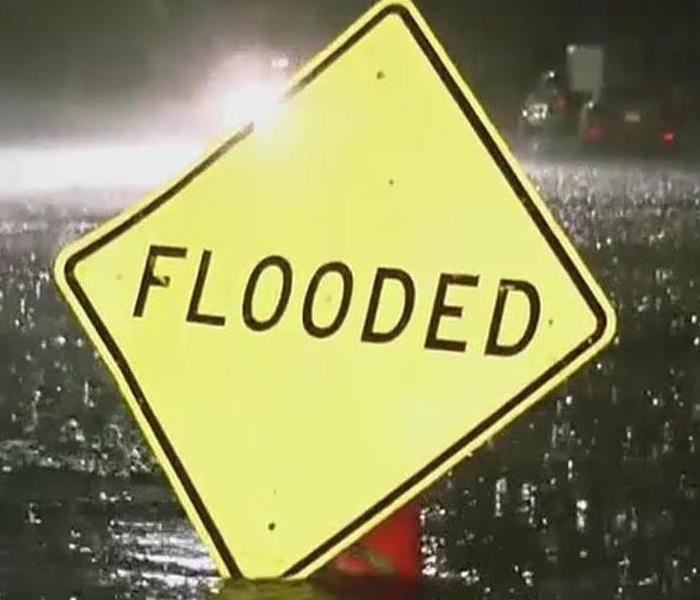 We at SERVPRO of Northwest Long Beach have trained technicians and all the equipment needed to remediate all sources of water damage 24/7
We at SERVPRO of Northwest Long Beach have trained technicians and all the equipment needed to remediate all sources of water damage 24/7
California is prone to potentially devastating impacts of periodic floods. All 58 counties have experienced at least 1 significant flood event in the past 25 years, resulting in loss of life and billions of dollars in damages. Floods are naturally occurring phenomena in California. They can keep erosion and sedimentation in natural balance, replenish soils, recharge groundwater, and support a variety of coastal floodplain habitats for some of California’s most sensitive species.
But when floods occur where people live and work, the result can be a tragic loss of life and property, including economic impacts from damaged critical infrastructure and vital public facilities, valuable agricultural land taken out of production, and disruptions to California’s water supply system.
One of the leading risk factors for flooding in California is the fact that so many of our major cities have developed around major rivers. Climate change predicts even more variability in meteorological and hydrologic conditions with increasingly intense atmospheric rivers, punctuated by increasingly severe droughts.
All regions of California are susceptible to flooding at different times of the year and in different forms ranging from tsunamis in coastal areas to alluvial fan flooding at the base of hillsides, and from fast-moving flash floods to slow rise deep flooding in valleys. Flood risk varies across the state, generally increasing with storm frequency, as well as with development in floodplains.
We work with local and federal agencies to build and maintain a robust flood control system of levees and bypasses.
All Californians should know their flood risk and be prepared. Damage caused by flood can be devastating, including lives lost, property damaged and negative economic effect.
The question is how do you prepare for such a disaster event? There are several ways you can prepare for flood.
1- Check with your local council about their flood plan.
2- Ask authorities about relocation routes and centers.
3- If you are in a flood zone consider alternative floor instead of carpet.
4- Emergency kit
5- Have household plan
Also you can get great help on FEMA website or take. This is one of many classes they offer
https://training.fema.gov/is/courseoverview.aspx?code=IS-2700.
We at SERVPRO of Northwest Long Beach have trained technicians and all the equipment needed to remediate all sources of water damage 24/7, from leaky pipes to heavy floods. 562-506-4992
SoCal Storm Tips
8/4/2022 (Permalink)
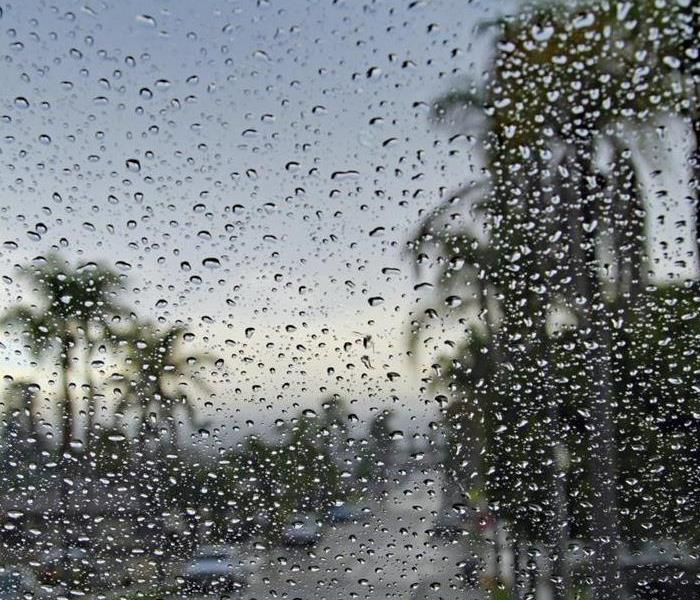 Don't get caught in the storm! SERVPRO Northwest Long Beach is here around the clock to help with any storm damage-related issues. 562-506-4992
Don't get caught in the storm! SERVPRO Northwest Long Beach is here around the clock to help with any storm damage-related issues. 562-506-4992
If you are a homeowner, a property manager, or own commercial buildings you can benefit by quarterly walking the exterior and interior of your property checking for areas that may need maintenance. As an insurance policyholder, you are expected to be proactive regarding repairs and take preventative measures to avoid potential damage risks.
The following four areas may be areas of concern so that precautions can be taken far in advance since many times we may have little to no warning of a downpour in our sunny state.
- Inspect Drains and Gutters – Debris can clog these areas and quickly cause a water intrusion, even if they are brand new.
- Inspect Windows and Doors – Wind, hot temperatures, and the intense sun can warp and wear on building materials, weatherproofing, and seals. Replacement may be needed especially if you live in a windy area pocket. Several years of strong winds can loosen window seals over time.
- Inspect Surrounding Landscape Close to the Structure – Trees and foliage grow quickly here in California. Trimming and maintaining a well-manicured yard lessens the risk of issues when the Santa Ana Winds kick up.
- Minimize Outdoor Furniture and Unsecured Items – When the winds startup they can be very strong so anchor or bolt down BBQs, mailboxes, dog houses, and any other item that could pose a potential danger to a person or to your structure.
STORM DAMAGE: HOW TO BE PREPARED
7/13/2022 (Permalink)
 Storm clouds brewing in Long Beach area
Storm clouds brewing in Long Beach area
The devastation caused by storm damage can be far-reaching. The residents and business owners in the Greater Santa Barbara area were victims to the cruel effects of the wild fires, mud slides and extreme water damage occurring this year. SERVPRO Northwest Long Beach was there to help with cleanup, restoration and reconstruction expertise.
When a wild fire has affected an area, it becomes susceptible to landslides due to destabilization of the soil or foundation. When a storm is threatening, preplanning and preparation can assist in lessening storm and water damage.
The most important thing to know is how to recognize when the storm will be approaching and the signs that come along with a landslide. Change in the landscape and sudden cracks in the pavement are major signs that a landslide may occur at your home. Indicators such as pipes bursting, and crackling of trees or light rumbling sounds are signs that the ground beneath is moving.
During a severe storm make sure to stay alert and awake. Move away from the path of a landslide or debris flow as quickly as possible. The danger from a mudflow increases near stream channels and with prolonged heavy rains. Make sure to stay clear of all rivers or open bodies of water. If escape from the landslide is not possible, authorities recommend you curl into a tight ball and cover your neck and head as much as possible.
After a landslide make sure you stay away from affected until advised otherwise. Look for and report broken utility lines and damaged roadways and railways to appropriate authorities. Reporting potential hazards will get the utilities turned off as quickly as possible, preventing further home emergencies. SERVPRO Northwest Long Beach is here to assist you with any storm damages, as well water and fire damages, affecting your home or business. Call us, 24/7, when emergency strikes: (562)506-4992
Warm Weather And Good Times Outdoors, What About Lightning?
7/13/2022 (Permalink)
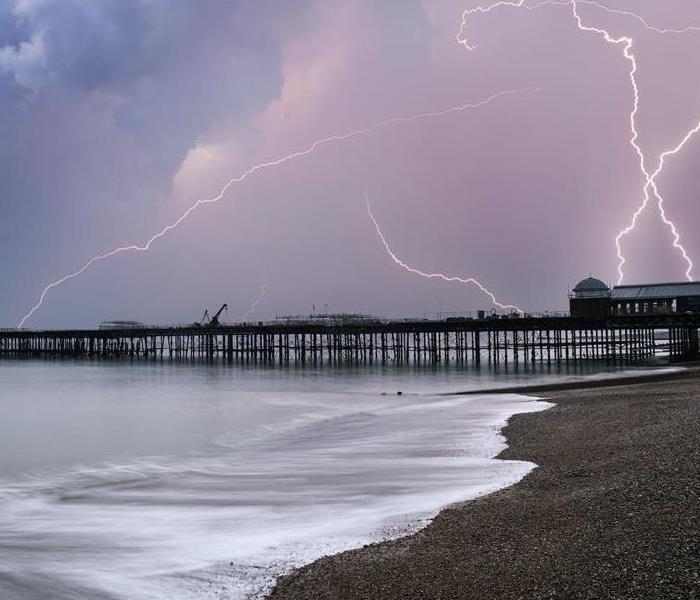 Lightning strike at Local Beach
Lightning strike at Local Beach
Lightning is hotter than the surface of the sun, it can reach temperatures around 50,000 degrees F. That is according to the National Weather Service. While we still have some good outdoor weather ahead, use caution.
Here are some outdoor activity guidance from The National Weather Service:
Coach of Outdoor Sports Team
Your little league team has an evening game at the local recreational park. The weather forecast calls for partly cloudy skies, with a chance of thunderstorms by early evening. When you arrive at the park, you notice the only safe buildings are the restrooms.
Shortly after sunset, the sky gets cloudy and you see bright flashes in the sky. What should you do? Get everyone into vehicles or the restrooms. Do NOT stay in the dugouts; they are not safe during lightning activity. Once in a safe place, wait 30 minutes after the last rumble of thunder before resuming play.
At the Beach or Lake
Your family plans to go to the beach today. The weather forecast calls for a nice morning followed by a 30 percent chance of afternoon thunderstorms. When you get to the beach, you see that the only nearby structures are open-sided picnic shelters.
The parking lot is a 5 minute walk from the beach. By early afternoon skies are darkening and hear distant thunder. What should you do? Go to your car! Do NOT seek shelter under the beach picnic shelters. Wait 30 minutes until after the last rumble of thunder before going back to the beach.
TSUNAMI: A REAL THREAT IN CALIFORNIA
7/13/2022 (Permalink)
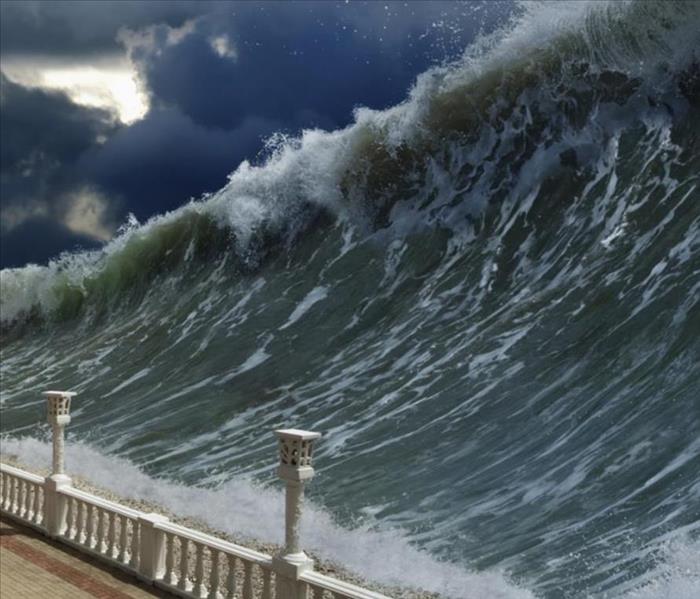 Tsunami preparedness is critical for Long Beach
Tsunami preparedness is critical for Long Beach
Living in California, and especially along the coast, we’re aware that we can feel the negative impacts from natural threats such as tropical storms and Tsunamis. In fact, just off the coast of California lies the Cascadia fault – which is thought to be up to 30 times more powerful than its more famous neighbor, the San Andreas Fault.
SERVPRO Northwest Long Beach is here to assist when your home or business is affected by water, fire and storm damages. We also want to provide you information to help you avoid loss or damage to property, personal belongings or, in the worst case, people. Here are some insights about Tsunamis to keep you informed:
Ready.gov classifies a tsunami as "a series of enormous waves created by an underwater disturbance such as an earthquake, landslide, volcanic eruption, or meteorite." Tsunamis are also known as seismic sea waves and often mistaken for tidal waves. Areas within a mile of the coast and less than 25 feet about sea level have a greater risk of being hit, according to www.Ready.gov
It is important to be aware of evacuation routes close to the beach and have an emergency plan prepared in case one strikes. It is also very important to understand that the first wave often is not the last and could get larger. Once you have reached higher ground, make sure to stay away from effected sites until officials deem them safe. Flooding is the most common safety hazard but, in the aftermath of the event, landslides, floods, debris, and/or contaminated drinking water can also occur.
If you are traveling anywhere tropical, you may want to check out www.tsunami.gov in advance to determine if there are advisory warnings, threats, etc. Also, make sure you keep up-to-date on where to go during an emergency evacuation due to tsunami and who to contact once you reach a safe area.
If your property becomes damaged from a tsunami, or from any loss caused by water, fire, storm or biohazard, SERVPRO Northwest Long Beach is here to clean up, restore and, when needed, reconstruct your home or business. Reach us 24/7/365 at (562)506-4992
FLOOD DAMAGE - IT CAN HAPPEN ANYWHERE!
7/13/2022 (Permalink)
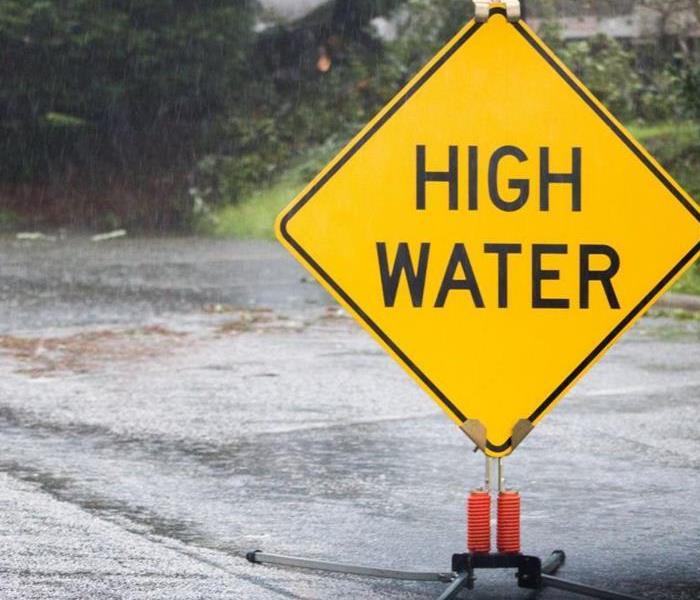 Don't get swept away by flood water, Call SERVPRO Northwest Long Beach
Don't get swept away by flood water, Call SERVPRO Northwest Long Beach
Throughout the US, floods remain one of the most widespread and common natural disasters that affect us. No matter where you’re located, in the mountains, along the coast, in the city, close to a river, or out in the desert, you can still be impacted by a flood.
Here are some important safety tips to keep in mind:
- Even 6 inches of quickly moving water can sweep you off your feet so steer clear of floodwaters. If you find yourself in an area where the water reaches above your ankles, find another path, walk another way.
- When driving, the same rules apply: If you approach a flooded road, turn around and go another way. Most vehicles can be carried away by less than 2 feet of moving water. If caught by rising waters and the situation warrants it, get out of your car quickly and move to higher ground.
- Protect children from the dangers and diseases carried by contaminated floodwaters. What might look like a fun activity to them could prove deadly.
SERVPRO of Northwest Long Beach has the experience and knowledge to assist you when a flood strikes your home or business. No matter the size, floods have the potential to cause extensive damage to property when not treated quickly and properly and the cleanup can be an overwhelming task.
We’re here 24 hours,7 days a week to help. Contact us at (562) 506-4992 for more information
Storm in Long Beach, California
8/20/2020 (Permalink)
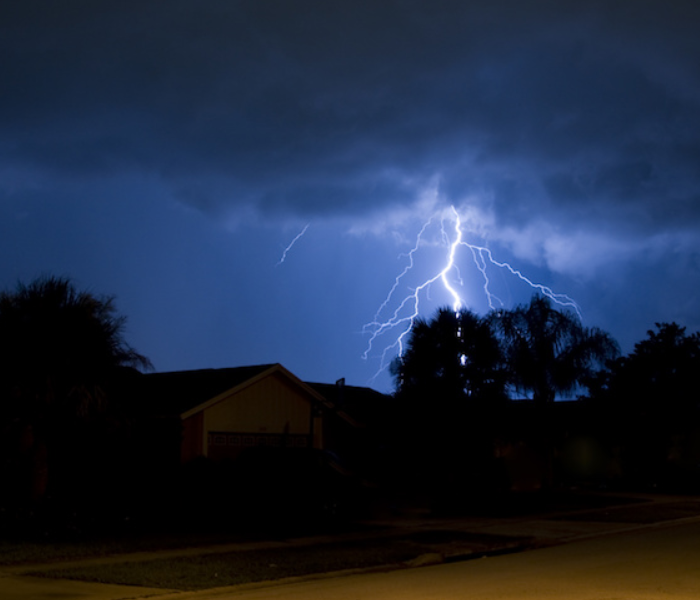 Storm Long Beach, California
Storm Long Beach, California
Natural disasters like storms can put pressure on a city's infrastructure and sewage system. In severe cases, this pressure can cause systems to fail and result in flash flooding or road overflow. SERVPRO Northwest Long Beach operate a 24-hour emergency call line alongside a rapid response unit to help you should you experience property flooding or need emergency repair.
As a standard, we offer our community emergency board-ups as well as industrial-scale water removal equipment like gas-powered pumps and truck-mounted extraction units. We commit to arrange a service within one hour of your call and arrive onsite within just four or less. As always, you can rely on us to provide qualified technicians to help cleanup and restore your home or your business in an emergency. Our owner, Henry Sonboli has over 10-years’ experience in restoration and can coordinate with your adjuster to remain in the budget for a seamless effort from inspection to completion. For free estimate contact us at 562-506-4992.
Storm damage in Long Beach, CA
7/9/2020 (Permalink)
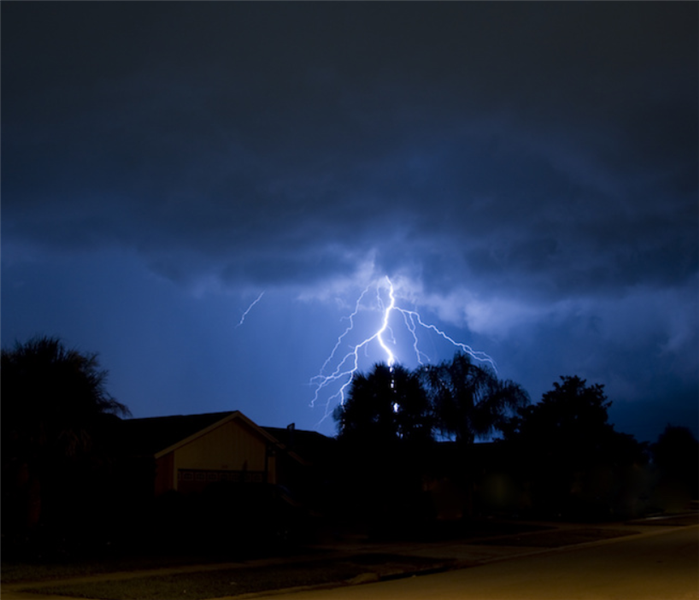 Storm safety
Storm safety
When you are out enjoying gorgeous summer weather, having the day interrupted by thunderstorms is quite an inconvenience—but it can be extremely dangerous, as well. Any thunderstorm, even the quick ones associated with summer heat, can cause serious damages to those in their path.
Because these storms often happen with little notice, we have assembled some tips to help you be storm-smart no matter where you are.
Be Storm-Smart No Matter Where You Are
Know your options for shelter. If it is clear that a storm is on the way and you are still safely at home, staying put until the threat passes is the safest thing to do. However, the nature of these storms do not always lend themselves to this. If you are caught out and about, your car can be used for shelter to protect you—simply cut off the engine and avoid touching metals in the vehicle.
Practice electrical safety. If lightning strikes the building you are in, the charge will typically travel through the electrical wires on its way to the ground, which can lead to a power surge. Power surges can ruin electronics and lead to dangerous sparking that can cause fires. The best thing to do is unplug everything when you know a storm is incoming, but installing surge protectors at home and at work can protect your items when this is not a possibility.
Avoid direct contact with concrete. If you are seeking shelter in a structure, concrete buildings might seem like the safest place to be. It is important to realize that these, too, can pose a threat, as metals within the concrete can still transmit an electrical charge if lightning strikes the building. If you are in a concrete building, be sure to avoid any direct contact with floors and walls to avoid harm.
Stay indoors for at least 30 minutes. When your day is interrupted by a sudden storm, it is normal to be antsy to get back outside. It is important to follow officials’ recommendations, however—because lightning is able to travel distances of up to 25 miles in order to strike, wait 30 minutes from the last clap of thunder before you head back out.
If your home sustains damage due to a storm, you can count on us to help. Contact us at any hour to learn more about our storm restoration process.
Storm damage in Long Beach, CA
5/12/2020 (Permalink)
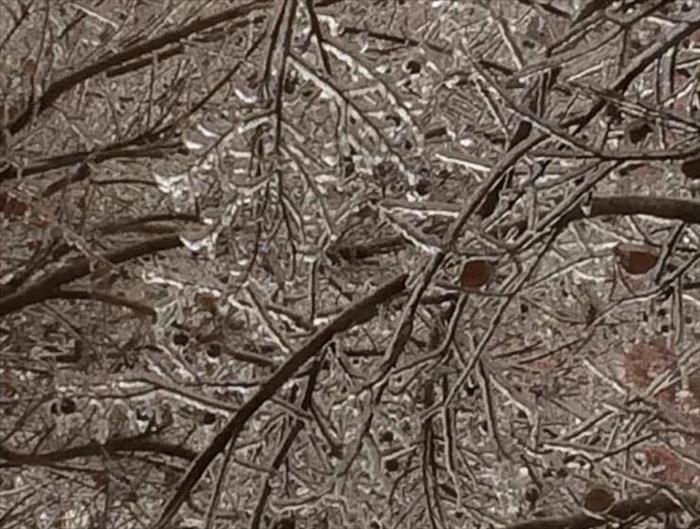 Long Beach California during last storm.
Long Beach California during last storm.
Falling trees, fire, high wind and hail storms often cause damage to roofing and other vulnerable parts of your property. Safety should always be your primary concern to prevent storm damage to your business.
- Roofing. The best way to prevent unnecessary damages is to ensure that your roof is in the best shape possible before storm season hits. After a storm, any initial roof assessment should be completed from the ground as you want to make sure you are safe. If you suspect damage to your shingles or structure, contact a professional immediately. Make sure everyone vacates the premises in the event of major roof damage.
- Landscaping. Before the stormy season, have your landscaping trimmed back and remove all dead or dying vegetation. This will help to lessen the risk of flying branches or falling trees.
- Walkways. Heavy storms can undercut walkways, making them dangerous for pedestrians, and that’s something you definitely want to avoid. Have them updated and strengthened before heavy weather, and take a good look at them after a storm moves through the area. If you need a second pair of eyes, call a professional storm damage cleanup company for help.
Storms and inclement weather can bring wind damage, heavy rain, and flooding that can devastate any business in a matter of minutes. There’s never a convenient time for flooding or water damage to strike, and storms don’t just strike during regular business hours; that’s why SERVPRO of Northwest Long Beach Professionals offer 24-hour emergency service 365 days of the year. Help is on the way! 562-506-4992
Storm damage in Long Beach, CA
5/8/2020 (Permalink)
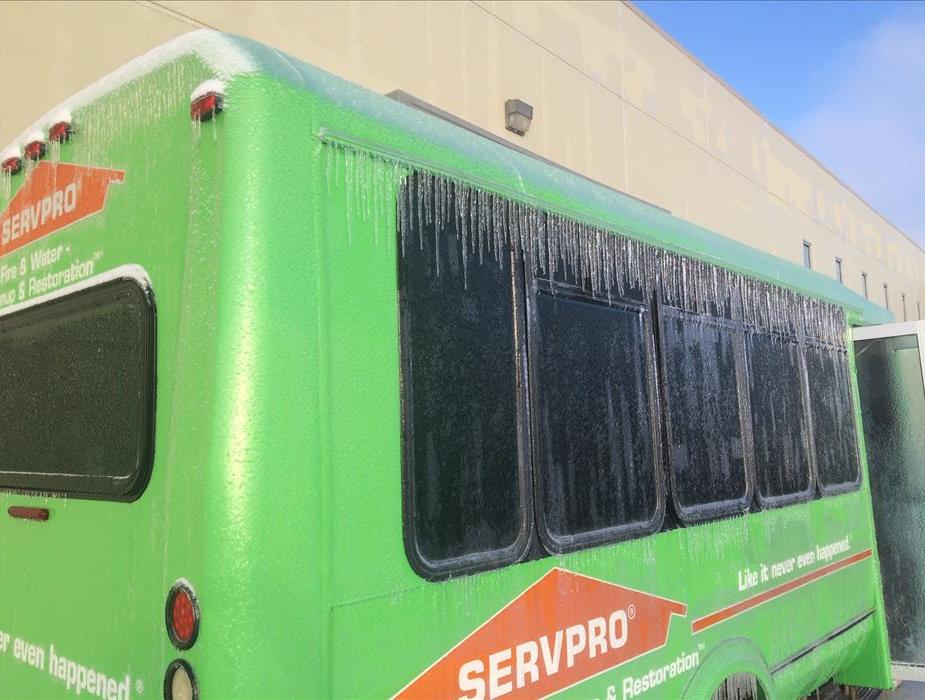 Storm in Long Beach
Storm in Long Beach
Many destructive impacts can come out of a single winter storm. Are you prepared for the coming winter? The array of hazards that can come from a winter storm are sometimes countless.
- Ice: Accumulations of a half inch or more, because of it's weight can cause widespread destruction and power outages and can have a crippling impact.
- Wet Snow: Much like ice accumulation, wet snow adds extra weight and stress, increasing the chance of damage. Moist snow sticks easily to trees and power lines.
- Snow on Roofs: Several feet from one or multiple storms accumulating on a roof can add stress, causing them to collapse.
- Flooding After the Snow: A rapid warm-up or rain following a winter storm with an expansive snow pack can set the stage for major flooding.
Melting snow and ice after a storm can also cause damage to the inside of your home or business. Call the professionals at SERVPRO of Quincy to assess the situation and put you to Pre-Winter condition, "Like it never even happened."
Water damage from Strom
8/15/2019 (Permalink)
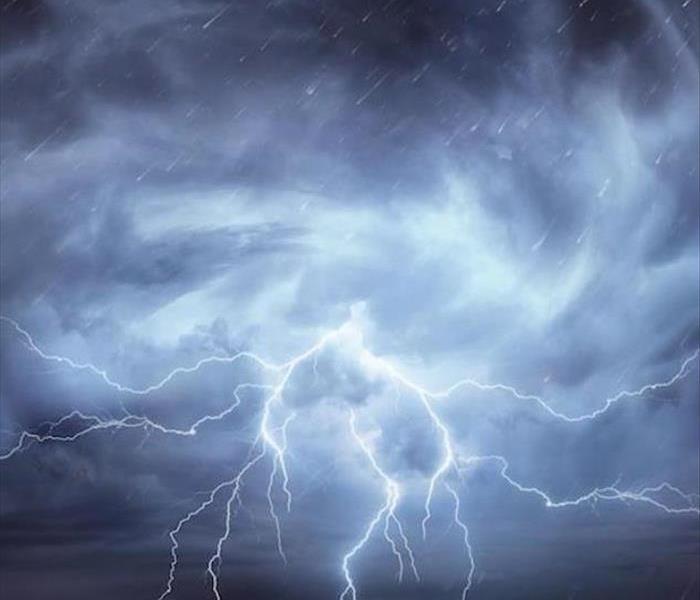 Water damage from Storm
Water damage from Storm
As we enter into the season of spring, we must also buckle up and be prepared for whatever weather Mother Nature may choose to send our way.
Mother Nature Can Be FickleWith the arrival of spring comes longer days and more sunshine, but unfortunately, spring also brings with it the threat of severe weather throughout the country. This means that the weather may change at any given moment.
Unstable temperatures can go from warm to cold in as short as an hour. That temperature change can result in extreme weather changes as well.
Thunderstorms are a regular occurrence throughout the spring and are the main cause of severe weather. A thunderstorm occurs whenever warm, moist air collides with cool, dry air, which is most common in the spring and summer.
Some of the costliest natural catastrophe losses in the U.S. for 2017 were the result of severe thunderstorms. Out of 50 events, there were 85 fatalities and an estimated total of $25.4 billion in overall losses.
With these storms comes the threat of flooding, high winds and even tornadoes if the conditions are right. It has been found that in modern history, 10% of all violent tornadoes have occurred in March, with April, May and June taking the top spots at 30%, 24% and 15% respectively.
Preparing for the UnpredictableMeteorologists have the technology and the tools available to predict the possibility of severe weather, but even that is not enough to predict the weather with 100% accuracy. Advanced warnings, along with the right preparation, can greatly improve overall safety for your family.
Some suggestions of things you can do to your home to prepare for the chance of severe weather are as follows:
- Clear out your home’s gutters, drains and downspouts.
- Trim trees of precarious limbs or branches that could break off in a storm.
- Secure or store outdoor belongings if severe weather is in the forecast.
Having an emergency kit on hand is always advised. These kits should include the following:
- Battery-operated flashlight and NOAA weather radio, with extra batteries for both
- Emergency evacuation or shelter plans
- Important personal info, like telephone numbers of neighbors, family and friends, insurance and property info, numbers for the utility companies, and medical info
- A first-aid kit with things like non-latex gloves, adhesive bandages, tweezers, sterile gauze pads, aspirin packets, adhesive cloth tape and scissors
- 3–5 day supply of bottled water and nonperishable food
- Personal hygiene items
- Blankets or sleeping bag
Despite its unpredictability, there is one thing that always remains true of the spring weather season: It always happens. If your home or business is damaged in a storm, you can depend on SERVPRO® of Northwest Long Beach to get the cleanup and restoration process started fast.
Storm damage in Long Beach, CA
7/5/2019 (Permalink)
When we are in the spring and summer season, thunderstorms can happen any day. These storms can also bring a chance for property damage.
How familiar are you with the different types of damage that thunderstorms can cause?
Understanding StormsThere are an estimated 16 million thunderstorms each year all throughout the world. The United States experiences approximately 100,000 thunderstorms per year, and 10% of those are considered severe.
In order for a thunderstorm, there are three required components—moisture, rising unstable air, and a “lifting” mechanism. That lift can result from mountainous terrain that forces air to rise, or from warm/cold or wet/dry air bumping together, causing a rising motion.
There are three stages in a thunderstorm’s life cycle. The first is the developing stage, the second is the mature stage and the third is the dissipating stage. It’s during the middle stage where most damage occurs.
The Damage of ThunderstormsOf the many different dangers present during storms, one of the greatest risks is the chance for flying debris due to high winds.
During a severe thunderstorm, winds can gust up to and over 57.5 mph, which is more than enough to cause damage to your property.
Loose items in your yard, including kids’ toys and your lawn furniture, can quickly turn into projectiles.
Thunderstorms can also produce the following damage besides wind damage:
Lightning damage. If striking a home or building, the electricity that can pass through wiring can fry your electronics. Lightning can also result in the starting of fires.
Tornado damage. These storms are often short but mighty. In comparison with the winds of a normal storm at around 60 mph, tornadoes have winds gusting up to 200 mph. That dangerous punch can wreak havoc.
Hail damage. No matter what size hail you see during a thunderstorm, damage can result. In fact, there’s more than $1 billion in hail damage reported each year.
Flood damage. When a large amount of rain falls in a small amount of time, flooding results. There’s nowhere else for the rain to go and it’s falling too fast to dissipate into the ground.
If a thunderstorm has resulted in damage to your home or business, know that the team at SERVPRO® of Northwest Long Beach is available 24⁄7 to help with cleanup and restoration.
Tornado Safety Tips
4/25/2019 (Permalink)
Springtime weather is beautiful…and unpredictable. You should always be prepared for the chance of severe thunderstorms that contribute to the perfect conditions for a tornado to strike.
April and May are traditionally the months that have the highest occurrences of tornadoes at 30% and 24%, respectively. So that means we are currently in the height of tornado season throughout the United States.
Read on as we offer some tips and information on tornadoes that can help keep your family prepared for the worst possible scenario.
Weather Conditions That Could Create A TornadoNearly 1,200 tornadoes occur in the U.S. each year, and they are usually the byproduct of thunderstorms, especially those known as “supercells.”
A tornado will take shape as changes in wind speed and direction create a horizontal spinning effect within a storm cell. This is then tipped vertical by rising air moving up through the thunderclouds.
At first, the tornado’s signature funnel cloud is transparent, but it will become visible as water droplets from the storm’s moist air condense or as dust and debris are picked up.
Typically, tornadoes can grow to be 660 feet wide and will move at 10 to 20 miles per hour, although larger and faster have been observed. Hail and intense winds of over 200 mph can accompany tornadoes.
Tornadoes typically occur during the late afternoon during spring and summer, but it is vital to remember that they can occur anytime and anywhere.
Important Safety TipsKnowing the difference between a tornado watch and tornado warning is your first line of defense. A watch is issued when the conditions are favorable for tornadoes, while a warning is issued when a tornado has been reported by spotters or indicated by radar.
If a warning has been issued for your area, take immediate action and find a safe shelter, especially if you are in the path of the tornado.
Shelter options include:
- Underground options like a basement or storm shelter.
- The lowest part of your home, in an area that is away from outside walls, doors and windows. Interior closets and bathrooms can be ideal options.
- If you are outside, try to get to a sturdy building. Mobile homes and trailers are not a safe option.
- If on the road and no building access is available, do not get under an overpass or bridge. Instead, find a low, flat location and use your arms to protect your head and neck.
You should store working flashlights, a battery-powered weather radio and extra batteries in your selected tornado shelter at home.
If a tornado happens and you are caught out on the road, DO NOT try to outrun it. Also, when you are taking shelter in your home, you can provide additional cover by using furniture items like couch cushions, mattresses or blankets to help keep your head and neck covered.
Tornadoes can strike anywhere and wreak absolute havoc on the areas where they touch down. While meteorologists and weather services can provide some advanced warning to potential threats, tornadoes can still occur with little to no warning at all.
If your home or business has been damaged by a tornado, know that SERVPRO® of Northwest Long Beach is ready and waiting to jump into action and get cleanup and restoration of your property underway.
Are You Ready for Unpredictable Spring Weather?
4/17/2019 (Permalink)
As we enter into the season of spring, we must also buckle up and be prepared for whatever weather Mother Nature may choose to send our way.
Mother Nature Can Be FickleWith the arrival of spring comes longer days and more sunshine, but unfortunately, spring also brings with it the threat of severe weather throughout the country. This means that the weather may change at any given moment.
Unstable temperatures can go from warm to cold in as short as an hour. That temperature change can result in extreme weather changes as well.
Thunderstorms are a regular occurrence throughout the spring and are the main cause of severe weather. A thunderstorm occurs whenever warm, moist air collides with cool, dry air, which is most common in the spring and summer.
Some of the costliest natural catastrophe losses in the U.S. for 2017 were the result of severe thunderstorms. Out of 50 events, there were 85 fatalities and an estimated total of $25.4 billion in overall losses.
With these storms comes the threat of flooding, high winds and even tornadoes if the conditions are right. It has been found that in modern history, 10% of all violent tornadoes have occurred in March, with April, May and June taking the top spots at 30%, 24% and 15% respectively.
Preparing for the UnpredictableMeteorologists have the technology and the tools available to predict the possibility of severe weather, but even that is not enough to predict the weather with 100% accuracy. Advanced warnings, along with the right preparation, can greatly improve overall safety for your family.
Some suggestions of things you can do to your home to prepare for the chance of severe weather are as follows:
- Clear out your home’s gutters, drains and downspouts.
- Trim trees of precarious limbs or branches that could break off in a storm.
- Secure or store outdoor belongings if severe weather is in the forecast.
Having an emergency kit on hand is always advised. These kits should include the following:
- Battery-operated flashlight and NOAA weather radio, with extra batteries for both
- Emergency evacuation or shelter plans
- Important personal info, like telephone numbers of neighbors, family and friends, insurance and property info, numbers for the utility companies, and medical info
- A first-aid kit with things like non-latex gloves, adhesive bandages, tweezers, sterile gauze pads, aspirin packets, adhesive cloth tape and scissors
- 3–5 day supply of bottled water and nonperishable food
- Personal hygiene items
- Blankets or sleeping bag
Despite its unpredictability, there is one thing that always remains true of the spring weather season: It always happens. If your home or business is damaged in a storm, you can depend on SERVPRO® of Northwest Long Beach to get the cleanup and restoration process started fast.
Storm Damage Cleanup
6/8/2018 (Permalink)
Winter storms can have a crippling effect on the inhabitants of a community. Whatever the season; whatever the disaster; you must be prepared. Evacuate if necessary and brace yourself. Once the storm hits there’s not much you can do. Hopefully, you and your loved ones have made it out with minimal injuries. Now, you must prepare for storm damage cleanup.
Winter storm damage
Winter can bring on some frigid weather which can freeze pipes and cause them to burst. The result can be extensive water damage. Outdoor pipes most likely to freeze can be outdoor hose bibs, swimming pool/hot tub supply lines and water sprinkler lines. Interior pipes in unheated or inadequately heated areas include those in basements, crawl spaces, attics and garages. Make sure to look at these when inspecting your home. Roof damage is also an issue since snow and ice can damage gutters and roofs.
Getting help with storm damage cleanup
Since we are locally owned and operated, we are able to respond quicker with the right resources, which is extremely important. A fast response lessens the damage, limits further damage, and reduces the restoration cost.
Have Storm or Flood Damage? Call Us Today 562-506-4992
Why do I need to call a professional after there has been a Storm?
6/1/2018 (Permalink)
You come home from work after it had been storming all day and find that there is about an inch of standing water on your basement floor. Immediately you begin grabbing as many towels as you can and begin ringing them out into a bucket. You start opening up windows, you grab a fan to help dry up the water. You can’t get the job done fast enough. You think to yourself, “Can I do this myself or should I call for help?”
When a home is not properly cleaned after floodwaters have occurred and a person attempts to fulfill the job themselves without the help of a professional it can end in more harm than good. Often times the cleaning, drying, and disinfecting processes aren’t done correctly which can result in leaving your home as an unhealthy and potentially moldy environment.
It is unfortunately not a time to try to do the job alone. Here are a few reasons why calling a professional is best rather doing it yourself:
- Flood water is contaminated
- Gravity pulls water
- Beware of mold
- Equipment is essential
SERVPRO of Northwest Long Beach is trained to clean, dry and disinfect your home in a way that leaves it free from contamination and mold. So, rewind! When you walk into your home and head down to your basement and come across standing water you will not attempt the job on your own. In fact, you will not let another moment go by without calling SERVPRO of Northwest Long Beach to get the job done right. You may attempt to soak up some of the water but it is after you have alerted us at SERVPRO of Northwest Long Beach and will be on our way to rescuing your home from water damage and a major outbreak of mold. Protect your home, protect your family and if you come across the horror of floodwaters invading your home, make the choice to call.
Have Storm or Flood Damage? Call Us Today 562-506-4992
Storm Damage Remediation Checklist
4/23/2018 (Permalink)
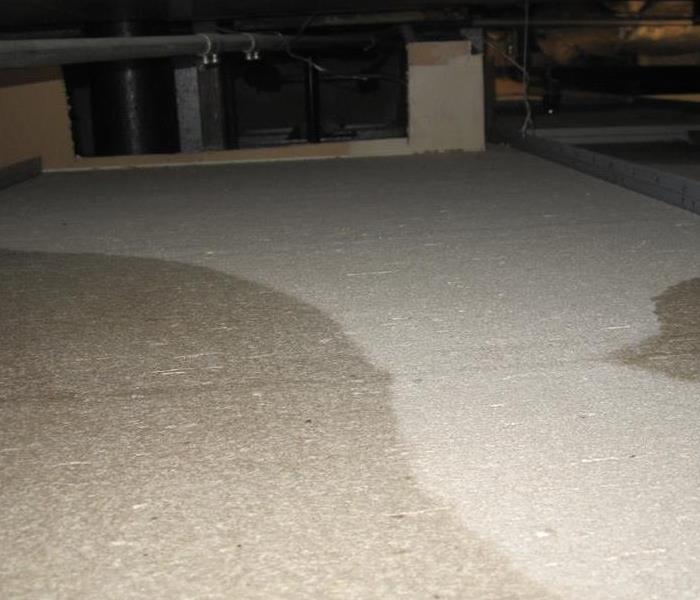 Damage caused by Storm in Signal Hill, CA.
Damage caused by Storm in Signal Hill, CA.
There are many things in life that are frustrating and stressful, especially if you are dealing with storm damage. With the following storm damage remediation checklist, you may find the process a bit easier to manage.
Step #1: Call for help! You should never try to tackle the cleanup from a storm on your own. Seek help from a professional to assess the situation and determine any major and immediate dangers. goo.gl/pNL8nx
Step #2: If you can safely do so, shut off the main controls to your home. It should not be turned back on until the storm damage has been resolved and everything in your home has been dried.
Step #3: Contact your insurance company to file a claim. You should take photographs if you can do so safely. You can call for water removal services goo.gl/pNL8nx before the adjuster comes out as long as there are photographs to substantiate your claim. It is advisable to get the water removed as quickly as possible to avoid added damages and reduce the chance for mold. It isn’t a good idea to wait if it takes a while for the adjuster to show up.
Step #4: Work with a professional water damage restoration company to salvage what is possible and begin repairs to the property. Most companies will work with your insurance company during this process.
Make sure to hire reputable restoration company and check their credentials goo.gl/BGRCKT
SERVPRO of Northwest Long Beach have certified technicians to help 24/7 with any size water damage remediation and clean up. 562-506-4992
What To Do In Case Of A Flood
4/20/2018 (Permalink)
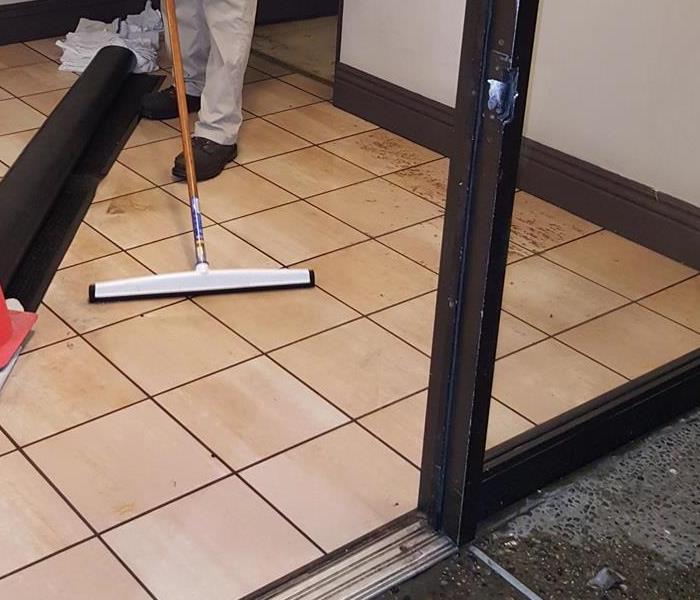 Storm damage in an apartment complex.
Storm damage in an apartment complex.
A flood occurs when water overflows or inundates land that's normally dry. This can happen in several ways. This can happen when river is overflow, heavy rain or tsunami causes sea to surge inland.
Damage caused by flood can be devastating, including lives lost, property damaged and negative economic effect. In 2011 total damage for flood loss was $8.41 billion including 113 flood related death.
The question is how do you prepare for such a disaster event? There are several ways you can prepare for flood.
1- Check with your local council about their flood plan.
2- Ask authorities about relocation routes and centers.
3- If you are in a flood zone consider alternative floor instead of carpet.
4- Emergency kit
5- Have household plan
Also you can get great help on FEMA website or take. This is one of many classes they offer
https://training.fema.gov/is/courseoverview.aspx?code=IS-2700.
We at SERVPRO of Northwest Long Beach have trained technicians and all the equipment’s to remediate all source of water damage 24/7, from leaky pipe to heavy flood. 562-506-4992
Water Emergencies Must Be Resolved Rapidly
11/16/2017 (Permalink)
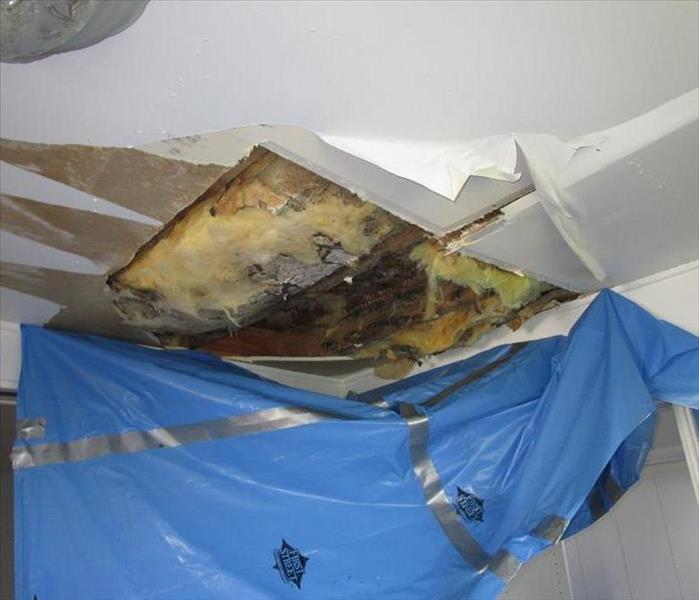 Improper attempt to "dry" this storm damaged ceiling has added significant to damage, costs, and mold remediation.
Improper attempt to "dry" this storm damaged ceiling has added significant to damage, costs, and mold remediation.
Ignoring storm damage and water is never a good idea... In this case, water was allowed to sit in wet insulation on dry wall and very quickly developed mold. Dark marking began to appear within the old water marked area in this ceiling and seams began to sag.
The scope of all work becomes much larger and more complex when storm damage is not eliminated quickly. In this occurrence, a large section of the ceiling had to be carefully removed. We then removed all moisture affected insulation (much larger than would have been originally removed). All affected wood was then HEPA vacuumed, sanitized, sanded, and dehumidifying and air scrubbing equipment was installed.
This was simple water damage from a storm and did not need to change to mold. The rapid addressing of water leaks would have eliminated water and saved days of work and $$Thousands!!!
When Storms or Floods hit Southern California, SERVPRO of Northwest Long Beach is ready!
11/15/2017 (Permalink)
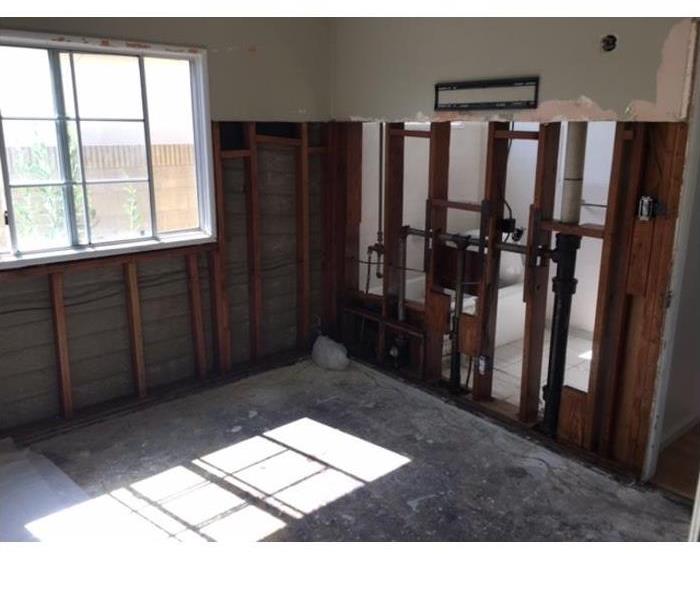 Our highly trained/skilled crews are ready to respond 24/7 to storm or flood damage in Southern California.
Our highly trained/skilled crews are ready to respond 24/7 to storm or flood damage in Southern California.
SERVPRO of Northwest Long Beach specializes in storm and flood damage restoration.
Faster Response
Since we are locally owned and operated, we are able to respond quicker with the right solutions and resources... An extremely important factor when emergencies arise. A fast response can minimize the damage, limit additional damage, and reduce the restoration delays and costs.
Resources to Handle Floods and Storms
When storms hit Southern California again, we can scale our resources to handle a large storm or flooding disaster. We can access equipment and personnel from a network of nearly 1,700 locations across the country and access our elite Disaster Recovery Teams. These Teams are strategically located throughout the United States for rapid deployment as seen in Texas and Florida.
Have Storm or Flood Damage? Call Us Today: 562 506 4992
http://www.SERVPROnorthwestlongbeach.com/company-profile
Be Prepared for an Emergency. Be Red Cross Ready!
5/9/2017 (Permalink)
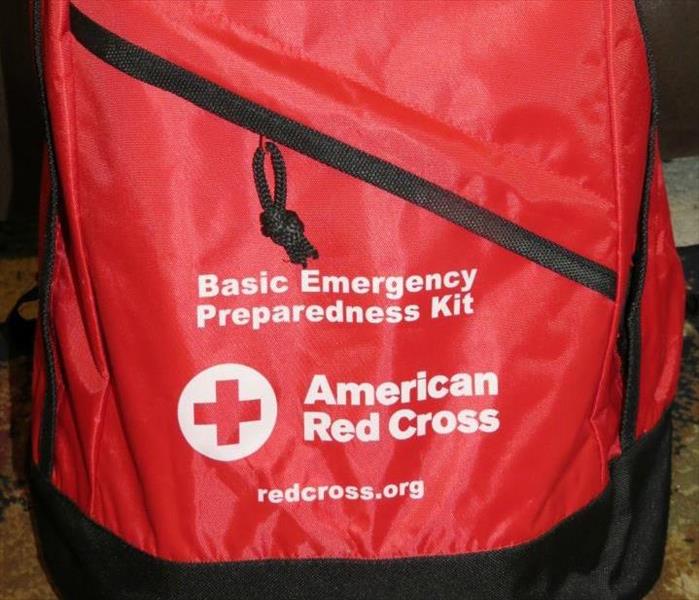 Being Prepared Saves Lives...
Being Prepared Saves Lives...
Being prepared means being equipped with the proper supplies you may need in the event of an emergency or disaster. Keep your supplies in an easy-to-carry emergency preparedness kit that you can use at home or take with you in case you must evacuate.
At a minimum, you should have the basic supplies listed below:
- Water: one gallon per person, per day (3-day supply for evacuation, 2-week supply for home)
- Food: non-perishable, easy-to-prepare items (3-day supply for evacuation, 2-week supply for home).
- Flashlight [Available on the Red Cross Store]
- Battery-powered or hand-crank radio (NOAA Weather Radio, if possible) [Available on the Red Cross Store]
- Extra batteries
- First aid kit [Available on the Red Cross Store]
- Medications (7-day supply) and medical items
- Multi-purpose tool
- Sanitation and personal hygiene items
- Copies of personal documents (medication list and pertinent medical information, proof of address, deed/lease to home, passports, birth certificates, insurance policies)
- Cell phone with chargers
- Family and emergency contact information
- Extra cash
- Emergency blanket [Available on the Red Cross Store]
- Map(s) of the area
Consider the needs of all family members and add supplies to your kit. Suggested items to help meet additional needs are:
- Medical supplies (hearing aids with extra batteries, glasses, contact lenses, syringes, etc)
- Baby supplies (bottles, formula, baby food, diapers)
- Games and activities for children
- Pet supplies (collar, leash, ID, food, carrier, bowl)
- Two-way radios
- Extra set of car keys and house keys
- Manual can opener
Additional supplies to keep at home or in your survival kit based on the types of disasters common to your area:
- Whistle
- N95 or surgical masks
- Matches
- Rain gear
- Towels
- Work gloves
- Tools/supplies for securing your home
- Extra clothing, hat and sturdy shoes
- Plastic sheeting
- Duct tape
- Scissors
- Household liquid bleach
- Entertainment items
- Blankets or sleeping bags
The American Red Cross Disaster Preparedness Programs
5/2/2017 (Permalink)
So that we all can be better equipped in any emergency... the Red Cross offers some great emergency preparedness/first aid courses for the public.
This valuable resource will do you little good the day AFTER a disaster, so take the time now to look at the many valuable courses offered and enroll. Look around: fire, flood, tornadoes, earthquakes have all occurred in the last week throughout the country. What would you do if it was your house destroyed?
http://www.redcross.org
Performing First Aid Learning how to perform first aid takes just a few short hours, but it can make all the difference during times of crisis. At the American Red Cross, we offer best-in-class in-person, online and blended learning first aid classes that can help you administer assistance to injured children and adults until medical professionals arrive. However, like many things, if you don't use your skills frequently, they're often easy to forget. That's why, when you take our first aid certification classes, you'll also receive free online access to our first aid refreshers.Types of First Aid TrainingAdult First Aid - Find information on performing first aid on teens and adults. This quick guide. gives you details on what to do when faced with an emergency – and provides you with simple-to-follow steps designed to help you deliver care in a wide range of scenarios.
Child & Baby First Aid - Children and babies need specialized emergency care. Find out how to safely perform first aid on even the youngest among us.
First Aid Recertification - If you've already learned to perform first aid but need to renew your certification, you can do so in an abbreviated class that allows you stay up to date on the latest techniques, and sharpen your skills. What would you do if disaster hit your house? Do you have at least a week supply of water for each family member? What is your plan to reunite with remote loved ones? What is your plan if power remains out for more than 3 days? How many flashlights do you have safely located throughout the house? Where are they/does every one know where they are/have you tested the batteries? When was your last emergency drill? How do you turn off the utilities? Who turns off the utilities? Under what circumstances do you turn off the utilities or leave them on? Have you completed your emergency drill at night in the dark... there may not be access to light when you need to evacuate. These are all things that can save valuable minutes and lives. Remember, when a real emergency strikes you may not see an emergency worker for days... You can not count on anyone coming to your rescue.
Damage Can Occur In Any Type of Storm
1/11/2016 (Permalink)
 We can help 24/7
We can help 24/7
Whatever Kind of Storm, SERVPRO Can Fix the Damage
Many homeowners expect only the worst storms to do damage to their home. Even short storms can cause damage to a home when trees are victims of disease. Many diseases can create weak trees with dead limbs, and some diseases can affect the roots of the tree instead. A tree that looks healthy may not be in reality, and it can actually be a huge danger to your home or garage without you knowing until it is too late. If your home or garage, or any other outbuildings, have been damaged by tree limbs or trunks, it is good to know that we have the skills and equipment to make it "Like it never even happened."
Rain is not Always Needed for Storm-Like Conditions to Exist, Nor for Damage to Happen
Dust storms can also create conditions ripe for storm damage to happen. Shingles and siding can come off, ripped away by high winds and debris that is carried by the wind. If sand is carried by winds, this can corrode and pit paint and other surfaces of your home's exterior. With trees, rain often erodes soil away from roots, making it easier for entire trees to topple onto houses and garages. Rain is not always needed for this to happen, however, if erosion has already happened.
When damage happens during a storm or when storm-like conditions happen, repairs should be started and completed as soon as possible. This can substantially reduce the risks posed by the elements to the interior of your home. Repairs will also keep insects and other pests from getting a foothold in further deteriorating your home's exterior. Termites and other pests, some of which may have been the reason behind any diseased trees on your property, won't be able to infiltrate your home's exterior if repairs are made, and completed, in a timely manner.
Storm Damage Repairs to Your Home or Garage First Begin with a Call to Us
At SERVPRO, we want you to know that we have the training, education, and experience to get your home or garage back in pre-damage condition. Call us, SERVPRO of Northwest Long Beach at (562) 206-4992 and we will arrive at your door to assess the damages and begin repairs.

 24/7 Emergency Service
24/7 Emergency Service










